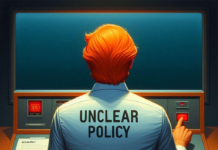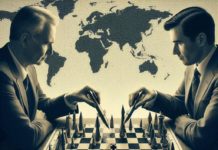MARKET PERSPECTIVE
By J Mulraj
Jan 20-26, 2024
Technology and strategic thinking can create a bright future
With several ongoing wars and conflicts, (Russia-Ukraine, Israel-Hamas, Commercial Shipping-Houthis, Iran-Pakistan) and other potential ones (China-Taiwan, Venezuela-Guyana), the picture looks bleak. Not only do wars beggar nations waging them, kill and maim their soldiers, incalculably harm the environment, they also ravage the global economy. The Houthis are attacking commercial shipping seeking passage through the Suez Canal, compelling them to take the longer route past the Cape of Good Hope, thus driving up shipping costs by 15% or more. This will fuel inflation which, in turn, may force central banks to retain their ‘higher for longer’ interest rates policy.
Given the jingoistic and myopic vision of global leaders, investors need to dream of things that could present them with a rosier future.
There are two things they can dream of.
- Technology
and
- Sensible policy.
Consider technology. I had, in a recent column, provided a link to this video on Tony Seba’s predictions but it’s worth repeating, and exhorting readers to listen to it. In it, Seba, who studies technological disruptions using cost curves, has talked about 3 sectors, namely transportation, energy and agriculture. The predictions he makes for all three give rise to optimism.
In transportation Seba says that there will be a combination of three disruptive trends, viz Electric vehicles, TASS (transportation as a service) and autonomous vehicles, operated by fleets, which will drive the per mile cost of transportation down 90%. It will cost one tenth to transport oneself using TASS as it will by owning a car. Seba predicts that an EV with a 300 km range, costing $5000 (without subsidy) will be available by 2030, and that it, together with TASS and autonomous mobility, will totally disrupt ICE (internal combustion engine) vehicles. If an EV costs less to buy than an ICE, and far less to maintain, the disruption is inevitable.
Such disruptions happen fast, once a tipping point is hit, when it makes economic sense for the consumer to switch. Seba points to the earlier disruption, in the early 20th century, when horse drawn carriages were displaced by motorized vehicles in a span of ten years (the horses were eaten).
Companies making ICE vehicles, like Mazda and Toyota, are rising to the challenge. Mazda has developed a new rotary combustion engine and threatens to destroy the EV industry and Toyota has developed a new engine that runs on water to do the same. EVs have one tenth the number of moving parts, which not only make them easier to manufacture and maintain, but also significantly reduce repair cost. But whether EV or ICE is the propulsion system, transportation costs will drop dramatically due to TASS and autonomous vehicles.
Because of TASS and autonomous vehicles, the need for private ownership will diminish. Besides that, the requirement for parking will also greatly reduce, freeing up urban spaces to build homes, parks, hospitals etc.
That’s something to dream a little dream about.
On energy Seba says that a 100% solar, wind and battery energy system is possible. It’s already present in Adelaide, Australia. Seba says his studies found a new property called a clean energy U curve (see video above at 16:15). If the energy system is designed at the bottom of the U, when, say, the sun shines the least, then, at other times we get an abundance of energy. He calls this super power. This power will be available at very low marginal cost and will be clean, renewable, energy.
That’s something to dream a little dream about!
In agriculture Seba talks about a new technique called precision fermentation. This is a way to produce specific ingredients, like protein, using microorganisms. In the last 20 years the cost of producing protein using precision fermentation has gone down from $1 m/kg to $100/ kg. (See 17.59 in the video). By 2030 the cost will be $1-2/ kg of protein produced, less than the cost of producing the protein through animal husbandry, which is $10/kg today. This will displace the animal husbandry industry. The huge benefit will come from saving in energy (the cow industry uses 5 times more energy than precision fermentation), water (10 times) and land (100 times). So the displacement of the dairy industry, by precision fermentation which produces protein at a far lower cost, in a Petri dish, without needing to cull the animals, will free up millions of acres of land (used for grazing as well as for growing the animal feed) and scarce fresh water resources.
Not only that, since cows are a major source of methane gas, (when they fart), much more harmful to the environment than carbon dioxide, the displacement of the animal husbandry industry will restore the environment.
That’s something to dream a little dream about!
So, technology is providing cheap and sustainable solutions for transportation, for energy and for agriculture.
Other than these, technology is also providing solutions in healthcare (gene spicing done by a technology called CRISPR), in manufacture (AI, robotics, IoT, 3D printing, all of which will improve productivity and reduce waste), and in other fields.
The biggest problems now are the wars and conflicts, the resolution of which is the responsibility of political leaders. There will be several elections in 2024, including in the world’s largest economy, USA. Donald Trump is expected to be the Republican candidate, running, most probably, against the octogenarian Democratic candidate, Joe Biden. Trump says he can end the Ukraine war immediately, an outcome highly desired.
Let’s dream a little dream, shall we?
Perhaps Trump thinks of doing this by pushing Zelensky to negotiate by denying further financial or military aid, and, simultaneously, pushing Putin to negotiate by, perhaps, offering him a NATO assurance not to expand eastwards, by again reopening to him the EU market for oil and gas, and by removing sanctions. Anything is possible in politics.
Should such a scenario unfurl, the oil and gas now being diverted to China (or a large part of it) would once again feed European countries, especially Germany. The German economy is reeling from the lack of cheap, reliable energy, and its leaders are lamenting their decision to cave in to US pressure on Russia.
I can dream, can’t I?
Last week the BSE Sensex closed at 70700, down 1128 points over the week. Global investors, who had factored in 5 interest rate cuts by the US Fed in 2024, are re-examining their assumptions.
As mentioned in my last column, US commercial real estate is a concern, with large vacancies due to two factors, viz. interest rate increased by 5% to fight inflation, and the increasing work-from-home trend. Moreover the unrelenting Houthis attacks on commercial shipping trying to go to the Suez Canal through the Red Sea, will spike inflation as well as crude prices. This will be taken into the calculus before embarking on an interest rate down cycle.
India was in a celebratory mood after the opening of the Ram Mandir in Ayodhya, followed by the Republic Day, where French President Macron was the chief guest. Global investors are looking with greater interest at India’s growth story and Jeff Bezos calls this India’s century.
Let’s hope all these dreams come true!
Picture Source: https://www.herzindagi.com/society-culture/dreams-amazing-facts-article-177662
Comments may be sent to jmulraj@asiaconverge.com










































COMMENTS